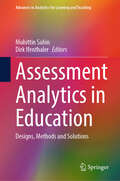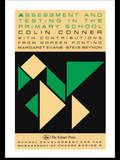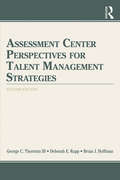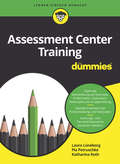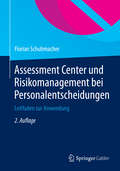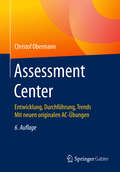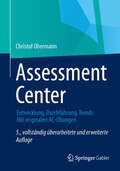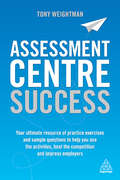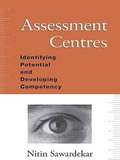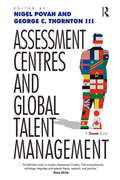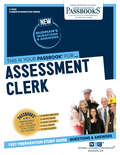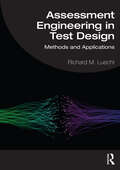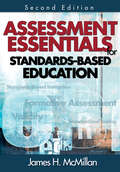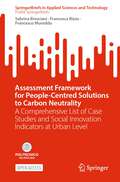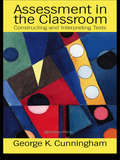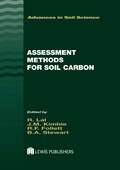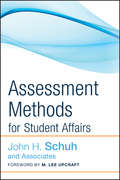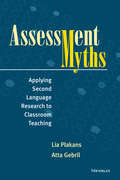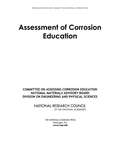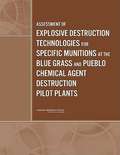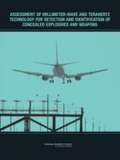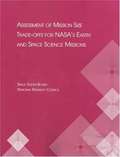- Table View
- List View
Assessment Analytics in Education: Designs, Methods and Solutions (Advances in Analytics for Learning and Teaching)
by Dirk Ifenthaler Muhittin SahinThis book is about the current state of research in online assessment. The growth of this field is set to accelerate exponentially with emerging opportunities for automatic data collection and analysis. Yet, the future of online assessment faces major challenges including, perhaps most importantly, the extent to which assessments, when enabled by technology, can serve simultaneously the needs of learners, teachers and those of the enterprise of education. This book details, specifically, the multiple ways in which online assessment can be utilized, such as:Providing virtual coaching or tutoringOffering appropriate scaffoldingAllowing analysis of student decision-making Providing the mechanism for students to review and comment on each others digital creationsCreating a space for online discussionProviding expert coaching for modeling and animation workWith the increased availability of vast and highly varied amounts of data from learners, teachers, learning environments, and administrative systems within educational settings, further opportunities arise for advancing pedagogical assessment practice (Ifenthaler et al., 2018). This book fully details these opportunities, as well as privileges and constraints of analytics-enhanced assessment, harnessing formative as well as summative data from learners and their contexts in order to facilitate learning processes in near real-time and help decisionmakers to improve learning environments.
Assessment And Testing In The Primary School (School Development And The Management Of Change Ser. #Vol. 8)
by Colin ConnerFirst Published in 2004. Routledge is an imprint of Taylor & Francis, an informa company.
Assessment Center Perspectives for Talent Management Strategies: 2nd Edition
by Deborah E. Rupp George C. Thornton III Brian J. HoffmanWritten by three leading scholars with vast experience in the science and practice of assessment centers (ACs), this is the first volume to comprehensively integrate variations of the assessment center method with alternative talent management strategies. A useful reference guide, it examines the many ways in which organizations can apply the assessment center method to achieve their talent management goals. It provides balanced and in-depth coverage of theory, research, and practice pertaining to the dimension-, task-, and multifaceted-perspectives on the AC method. Ideal for researchers, practitioners, and students alike, and well suited for courses in testing and measurement, personnel selection, HR planning and staffing, training and development, and organizational change, Assessment Center Perspectives for Talent Management Strategies is a complete and up-to-date account of the assessment center method.
Assessment Center Training für Dummies (Für Dummies)
by Laura Lüneborg Pia Petruschke Katharina RothHerzlichen Glückwunsch! Sie haben eine Einladung zu einem Assessment Center erhalten und damit die erste Hürde im Bewerbungsverfahren genommen. Nun ist es an Ihnen, sich planvoll vorzubereiten, um die vielfältigen, standardisierten Aufgaben zu bestehen. Pia Petruschke, Laura Lüneborg und Katharina Roth helfen Ihnen dabei. Sie erläutern Ziele und Absichten sowie den Aufbau eines Assessment Centers, nennen die Aufgabe der Beobachter, beschreiben die Methoden und geben Ihnen wertvolle Tipps für die Vorbereitung auf das Interview, die Präsentation und Diskussion, das Rollenspiel sowie die Gruppenübung. Auch die Materialschlachten rund um die Postkorbübung und die Fallstudien sowie Fähigkeits- und Persönlichkeitstests verlieren nach einer optimalen Vorbereitung ihren Schrecken. So können Sie bestens gebrieft und gelassen den diversen Aufgaben eines Assessment Centers entgegensehen.
Assessment Center und Risikomanagement bei Personalentscheidungen: Leitfaden zur Anwendung
by Florian SchuhmacherWie lässt sich die Güte der Personalauswahl und Potenzialermittlung absichern? Wie kann das damit verbundene unternehmerische Risiko beherrscht werden? Welche Möglichkeiten einer ganzheitlichen Personaldiagnostik gibt es? Assessment Center haben sich als bewährte Verfahren etabliert, wenngleich sie aufwändig sind. In der 2. , vollständig überarbeiteten und erweiterten Auflage zeigt der Personalexperte Florian Schuhmacher übersichtlich und mit kritischer Würdigung auf, wie sich Assessment Center effektiv planen, durchführen und nachbereiten lassen und wie deren Ergebnisse in andere personalwirtschaftliche Disziplinen einfließen können. Als Weiterentwicklung der AC-Methode wird das Assessment Center-Interview vorgestellt, das als AC-Light in den Situationen einsetzbar ist, in denen bisher klassische Interviewformen dominiert haben. Mit hilfreichen Checklisten und Handlungsempfehlungen, auch zu Aspekten der Internationalisierung und Globalisierung.
Assessment Center: Entwicklung, Durchführung, Trends Mit neuen originalen AC-Übungen
by Christof ObermannKonzentrierte Praxiserfahrungen werden hier umsetzbar und kritisch dargestellt. Das Buch gibt konkrete Anleitungen zur Entwicklung eines unternehmensspezifischen Assessment Centers und behandelt auch neue Entwicklungen und Trends wie Einzelassessments, computergestützte Anwendungen, dynamische Assessments.
Assessment Center: Entwicklung, Durchführung, Trends Mit originalen AC-Übungen
by Christof ObermannDieses Standardwerk vermittelt neue und immer noch gültige Erkenntnisse aus der empirischen Forschung und aus der Praxis für die betriebliche Anwendung. Das Buch gibt konkrete Anleitungen zur Entwicklung eines unternehmensspezifischen Assessment Centers und behandelt auch neue Entwicklungen und Trends. Mit zwei originalen AC-Übungen: Rollenübungen für ein Mitarbeitergespräch und Postkorb-Fallstudie, inklusive Musterlösung und Auswertung. Jetzt mit noch mehr praktischen HInweisen in der 4., vollständig überarbeiteten Auflage mit über 500 Seiten sowie mehr als 80 Skizzen und Abbildungen.
Assessment Centers in Human Resource Management: Strategies for Prediction, Diagnosis, and Development (Applied Psychology Series)
by Deborah E. Rupp George C. Thornton IIIThe theme permeating this book on assessment centers is "continuity and change", describing what has remained the same and what has changed in the 50-year history of the assessment center method. One of the important changes explored is the evolution of the goals of assessment center programs and the ways in which assessment centers and their component parts have been used. Assessment Centers in Human Resource Management clearly differentiates between assessment centers used for prediction, diagnoses, and development. In addition, this book explores: assessment centers and human resource management; court cases involving assessment centers; innovations in assessment center operations; cross-cultural considerations including diversity of the workforce; and assessor training. The target audience for the text includes students who are learning about assessment centers, practitioners including human resource managers and consultants who may be considering the implementation of assessment centers, and academicians who are researching the method and wish to understand current issues.
Assessment Centre Success: Your Ultimate Resource of Practice Exercises and Sample Questions to Help you Ace the Activities, Beat the Competition and Impress Employers
by Tony WeightmanAssessment Centre Success is your road map to mastering the skills, exercises and challenges that you'll be faced with when trying to secure that prized job offer. An Assessment Centre can be daunting: you are likely to face a full day of challenging exercises, tests and skilled competitors. However, with the right level of practice and preparation, you will be able to confidently tackle whatever employers may throw at you.Written by experienced Assessment Centre planner, Tony Weightman, Assessment Centre Success contains a bank of practice exercises and insider tips to help you succeed. Individual exercises are covered, including how to deliver good presentations, reports, interviews and analysis under pressure as well as group exercises such as problem solving and team presentations. Expert guidance on how to demonstrate the key skills employers are looking for helps you understand how to show yourself in the best possible light under challenging circumstances: including leadership, team work, industry knowledge, keeping calm under pressure, decision making, analytical skills, confidence and communication skills.
Assessment Centres
by Nitin SawardekarToday`s knowledge-driven organisations recognise the importance of managing competence strategically. To harness potential and develop competencies, a technique which organisations are increasingly resorting to is--assessment centres. In this lucid book, the author covers in detail the evolution of the technique and takes the reader through the entire procedure of employing assessment centre in an organisation which includes: - The identification of competencies - Design parameters - Approaches - The conduct of assessment centres
Assessment Centres and Global Talent Management
by George C. IiiGlobalization, innovation, market share, identifying visionary leaders and, particularly, talent management ...are just some of the issues that benefit from using assessment and development centres. Assessment Centres and Global Talent Management focuses on topics that influence the design of the assessment centre in terms of the competencies being assessed, the exercises that are used and the nature of the event, so that they can deliver what is required; often to change organizational culture and values. Practical examples and case studies are sprinkled throughout the book as international contributors explore cross-cultural implications, and consider how the design, development and use of assessment centres should be adapted to different cultures. Some of the world's leading researchers and practitioners outline their research into new applications for assessment centre methods, showing how they have used it to design and implement specific assessment and development centres. This is a book from which practitioners can see how science informs good practice, and scholars will find the 32 chapters a rich source of ideas for conducting research into emerging issues in the field.
Assessment Clerk: Passbooks Study Guide (Career Examination Series)
by National Learning CorporationThe Assessment Clerk Passbook® prepares you for your test by allowing you to take practice exams in the subjects you need to study. It provides hundreds of questions and answers in the areas that will likely be covered on your upcoming exam, including but not limited to: clerical operations with letters and numbers; coding/decoding information; name and number checking; real property terminology, documents and forms; understanding and interpreting written material; arithmetic reasoning; and other related areas.
Assessment Engineering in Test Design: Methods and Applications
by Richard M. LuechtAssessment Engineering in Test Design presents an engineering-inspired, multi-disciplinary approach to the field of applied measurement that bridges the gap between the craft of item writing and test design, the statistical sophistication of psychometric methods for scale development and maintenance, and score interpretations. This book directly addresses the topic of “next generation” assessment design head-on by proposing a new perspective, a new understanding, of the challenge of designing, developing, and implementing large- (and small-) scale educational testing programs.It introduces Assessment Engineering (AE) as a principled approach to test design where human judgment and creative license during test blueprinting and item writing are replaced with carefully developed cognitive task models that can generate highly consistent test forms that support intended statistical score scale properties and interpretations over time. In doing so, it shows how AE integrates key technologies and design principles from industrial engineering, cognitive science, information technology, machine learning and artificial intelligence, data science, statistical quality control, and advanced psychometrics to the practice of test design and development. Ultimately, this integrated approach offers improved and more consistent overall assessment quality; implementation of highly structured designs and scalable automation to reduce item production costs; reduction of item pretesting costs and exposure; improved calibration and scale maintenance over time; and more consistent generation and deployment of very high-quality, low-cost test items to meet both low- and high-volume production demands over time.Written by a major contributor to the literature on test design and scoring, Assessment Engineering in Test Design is an essential read for all students of psychology and related disciplines as well as test developers and psychometricians.
Assessment Essentials for Standards-Based Education
by James H. McMillanProven techniques for integrating assessment with teaching and learning!Demonstrating how to use assessment successfully to achieve broad educational goals, this user-friendly resource helps teachers, administrators, and other school personnel understand how to apply essential assessment concepts in their schools. In this updated guide, James H. McMillan offers examples from K–12 classrooms and illustrates how educators can create the critical feedback loop that reveals what students know, what to teach next, and which methods best assess student learning. The second edition of Essential Assessment Concepts for Teachers and Administrators shows teachers how to effectively incorporate the assessment process with teaching and learning for both classroom-focused assessments and externally mandated standardized tests. The author discusses the principles of testing, including validity, reliability, and fairness, and helps educatorsDevelop high-quality summative and formative assessments Understand and use data to improve assessment and learningPrepare students for state and national standardized testsAssessment Essentials for Standards-Based Education, Second Edition features two new chapters covering different assessment techniques and methods—including constructed-response and closed-end assessments—and grading practices in the context of standards-based education.
Assessment Framework for People-Centred Solutions to Carbon Neutrality: A Comprehensive List of Case Studies and Social Innovation Indicators at Urban Level (SpringerBriefs in Applied Sciences and Technology)
by Francesca Rizzo Sabrina Bresciani Francesco MuredduThis open access book presents a catalogue of over one thousand indicators which can be used by cities' public administrators to monitor and evaluate social innovation action plans to support people-centred, collaborative or co-designed solutions to lower carbon emissions. Indicators are clustered according to a framework of social innovation solutions for climate neutrality at city level, developed by merging top-down academic knowledge with bottom-up pragmatic case studies. There is currently limited guidance on how to embed social innovations in their cities’ action plans with the aim of reaching climate neutrality, and on how to assess the progress and impacts of such people-centred projects in cities. The book addresses this gap and is thus relevant for scholars in the field of policy-making and design, as well as cities’ transition teams, policymakers and consultants. Based on the work developed within the EU-funded project NetZeroCities, intervention logics are provided for each of the ten categories of action, with related indicators clustered by category and evaluation criteria (effectiveness, efficiency, relevance, replicability, and scalability). Guidelines to implement the framework support city administrators in defining steps they need to follow to apply the indicators to their local case, making social innovation a crucial lever for accelerating systemic transformation.
Assessment In The Classroom: Constructing And Interpreting Texts
by George CunnninghamEducational assessment, at one time a relatively uncontroversial subject, is now riven by a diversity of views. The most crucial division is between those who continue to believe in the effectiveness of objective assessment techniques and those who favour alternative methods. This book presents an analysis of the strengths, weaknesses and rationales for both.
Assessment Literacy: An Educator's Guide to Understanding Assessment, K-12
by Thomas DeVere Wolsey Susan Lenski Dana L. GrishamThis clear, no-nonsense book guides current and future teachers through the concepts, tools, methods, and goals of classroom literacy assessment. The expert authors examine the roles of formative, summative, and benchmark assessments; demystify state and national tests and standards; and show how assessment can seamlessly inform instruction. Strategies for evaluating, choosing, and interpreting assessments are discussed, as are ways to communicate data to parents and administrators. User-friendly resources include boxed vignettes from teachers and researchers, practical assessment tips (and traps to avoid), and 12 reproducible planning forms and handouts. Purchasers get access to a Web page where they can download and print the reproducible materials in a convenient 8 1/2" x 11" size.
Assessment Methods for Soil Carbon
by B. A. Stewart R. Lal J. M. Kimble R. F. FollettSince carbon sequestration in soils reduces the amount of carbon available to the atmosphere, the Kyoto Protocols have heightened interest in soil carbon pools and their effect on carbon fluxes. Assessment Methods for Soil Carbon addresses many of the questions related to the measurement, monitoring, and verification of organic and inorganic carbon
Assessment Methods for Student Affairs
by John H. Schuh and Associates M. Lee UpcraftEditor John Schuh and his fellow contributors, all experts in the field, detail the methodological aspects of conducting assessment projects specifically for the student affairs practitioner who is ready to conduct assessment projects, but is not quite sure how to manage their technical aspects. Using a variety of case studies and concrete examples to illustrate various assessment approaches, the authors lead the reader step-by-step through each phase of the assessment process with jargon-free, hands-on guidance.
Assessment Myths: Applying Second Language Research to Classroom Teaching
by Atta Gebril Lia PlakansThis volume was conceived as a "best practices" resource for assessment in the way that Vocabulary Myths by Keith S. Folse is one for reading and vocabulary teachers. Like others in the Myths series, this book combines research with good pedagogical practices. The book opens with an introduction that reviews many key assessment terms and concepts. The myths examined in this book are: Assessment is just writing tests and using statistics. A comprehensive final exam is the best way to evaluate students. Scores on performance assessments are preferable because of their accuracy and authenticity. Multiple choice tests are inaccurate measures of language but are easy to write. We should test only one skill at a time. A test's validity can be determined by looking at it. Issues of fairness are not a concern with standardized testing. Teachers should never be involved in preparing students for tests. Implications for teaching and an agenda for research are discussed in a conclusion.
Assessment Of Corrosion Education
by National Research Council of the National AcademiesThe threat from the degradation of materials in the engineered products that drive our economy, keep our citizenry healthy, and keep us safe from terrorism and belligerent threats has been well documented over the years. And yet little effort appears to have been made to apply the nation's engineering community to developing a better understanding of corrosion and the mitigation of its effects. The engineering workforce must have a solid understanding of the physical and chemical bases of corrosion, as well as an understanding of the engineering issues surrounding corrosion and corrosion abatement. Nonetheless, corrosion engineering is not a required course in the curriculum of most bachelor degree programs in MSE and related engineering fields, and in many programs, the subject is not even available. As a result, most bachelor-level graduates of materials- and design-related programs have an inadequate background in corrosion engineering principles and practices. To combat this problem, the book makes a number of short- and long-term recommendations to industry and government agencies, educational institutions, and communities to increase education and awareness, and ultimately give the incoming workforce the knowledge they need.
Assessment Of Explosive Destruction Technologies For Specific Munitions At The Blue Grass And Pueblo Chemical Agent Destruction Pilot Plants
by National Research Council of the National AcademiesThe Army's ability to meet public and congressional demands to destroy expeditiously all of the U.S. declared chemical weapons would be enhanced by the selection and acquisition of appropriate explosive destruction technologies (EDTs) to augment the main technologies to be used to destroy the chemical weapons currently at the Blue Grass Army Depot (BGAD) in Kentucky and the Pueblo Chemical Depot (PCD) in Colorado. The Army is considering four EDTs for the destruction of chemical weapons: three from private sector vendors, and a fourth, Army-developed explosive destruction system (EDS). This book updates earlier evaluations of these technologies, as well as any other viable detonation technologies, based on several considerations including process maturity, process efficacy, process throughput, process safety, public and regulatory acceptability, and secondary waste issues, among others. It also provides detailed information on each of the requirements at BGAD and PCD and rates each of the existing suitable EDTs plus the Army's EDS with respect to how well it satisfies these requirements.
Assessment Of Millimeter-wave And Terahertz Technology For Detection And Identification Of Concealed Explosives And Weapons
by National Research Council of the National AcademiesThe security of the U.S. commercial aviation system has been a growing concern since the 1970’s when the hijacking of aircraft became a serious problem. Over that period, federal aviation officials have been searching for more effective ways for non-invasive screening of passengers, luggage, and cargo to detect concealed explosives and weapons. To assist in this effort, the Transportation Security Administration (TSA) asked the NRC for a study of emerging screening technologies. This report—the third of four—focuses on currently maturing millimeter-wavelength/terahertz imaging and spectroscopy technologies that offer promise in meeting aviation security requirements. The report provides a description of the basic operation of these imaging systems, an assessment of their component technologies, an analysis of various system concepts, and an implementation strategy for deployment of millimeter-wavelength/terahertz technology screening systems.
Assessment Of Mission Size Trade-offs For Nasa's Earth And Space Science Missions
by Ad Hoc Committee on the Assessment of Mission Size Trade-offs for Earth Space Science MissionsThe National Academies Press (NAP)--publisher for the National Academies--publishes more than 200 books a year offering the most authoritative views, definitive information, and groundbreaking recommendations on a wide range of topics in science, engineering, and health. Our books are unique in that they are authored by the nation's leading experts in every scientific field.
